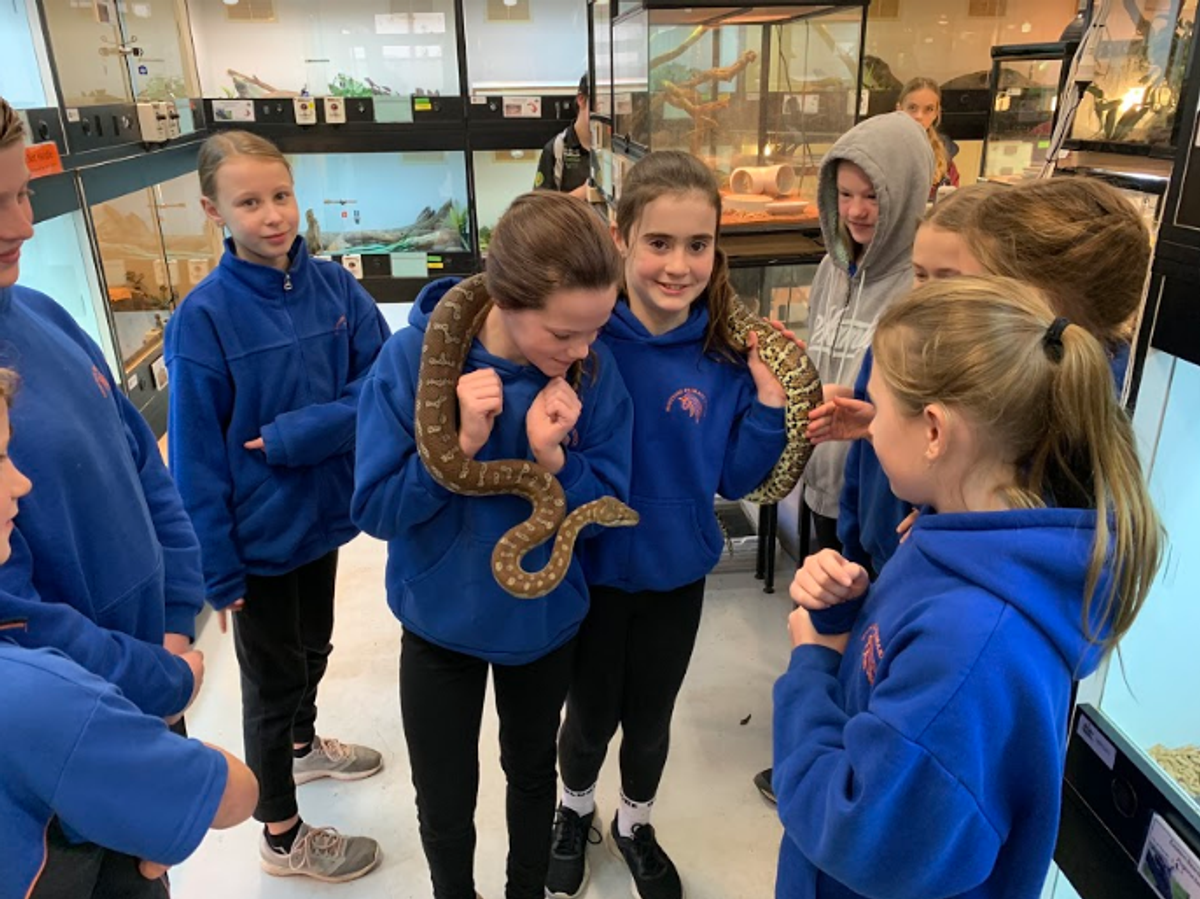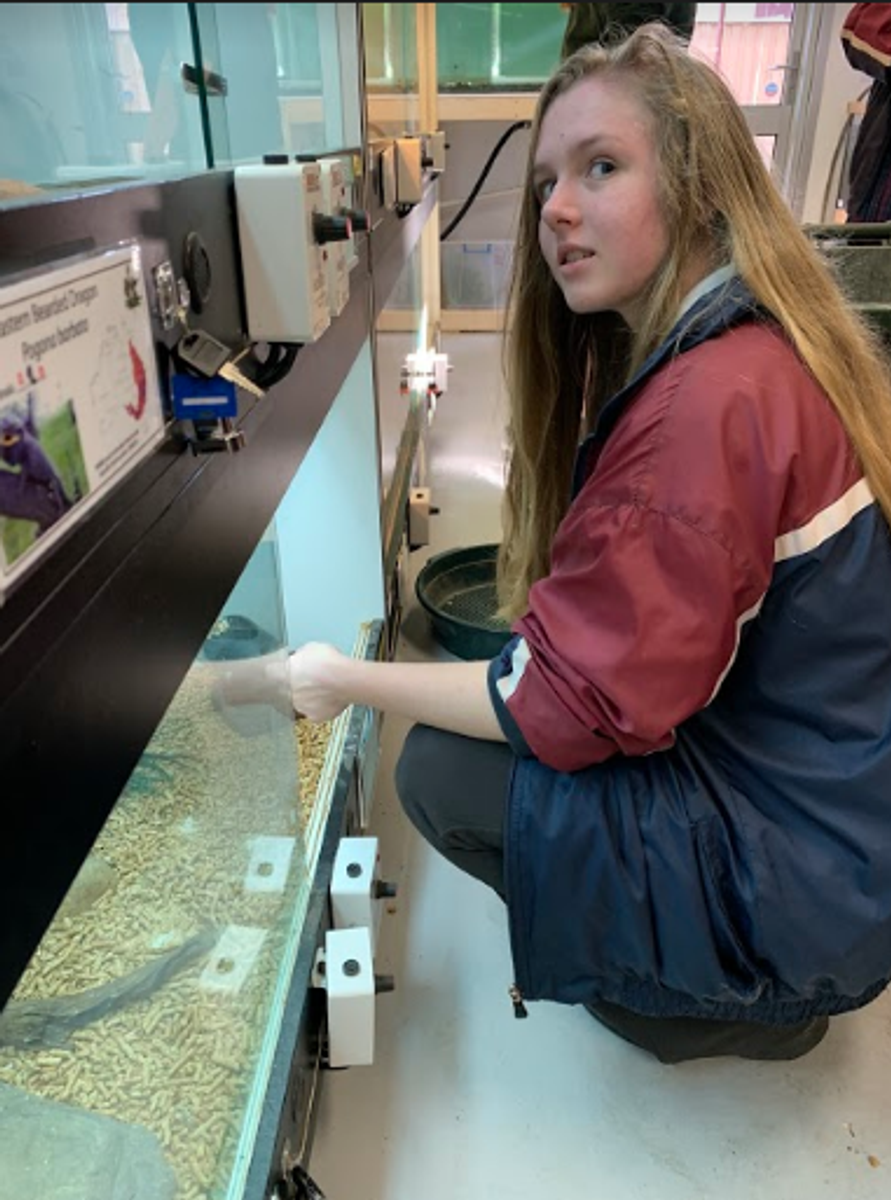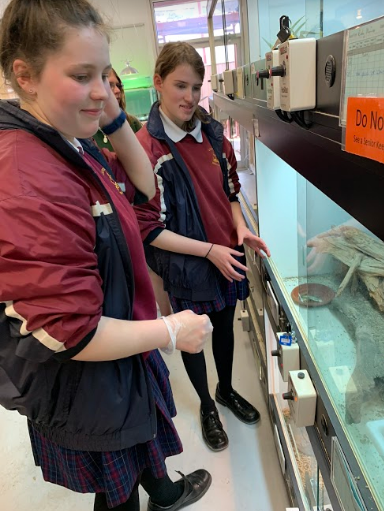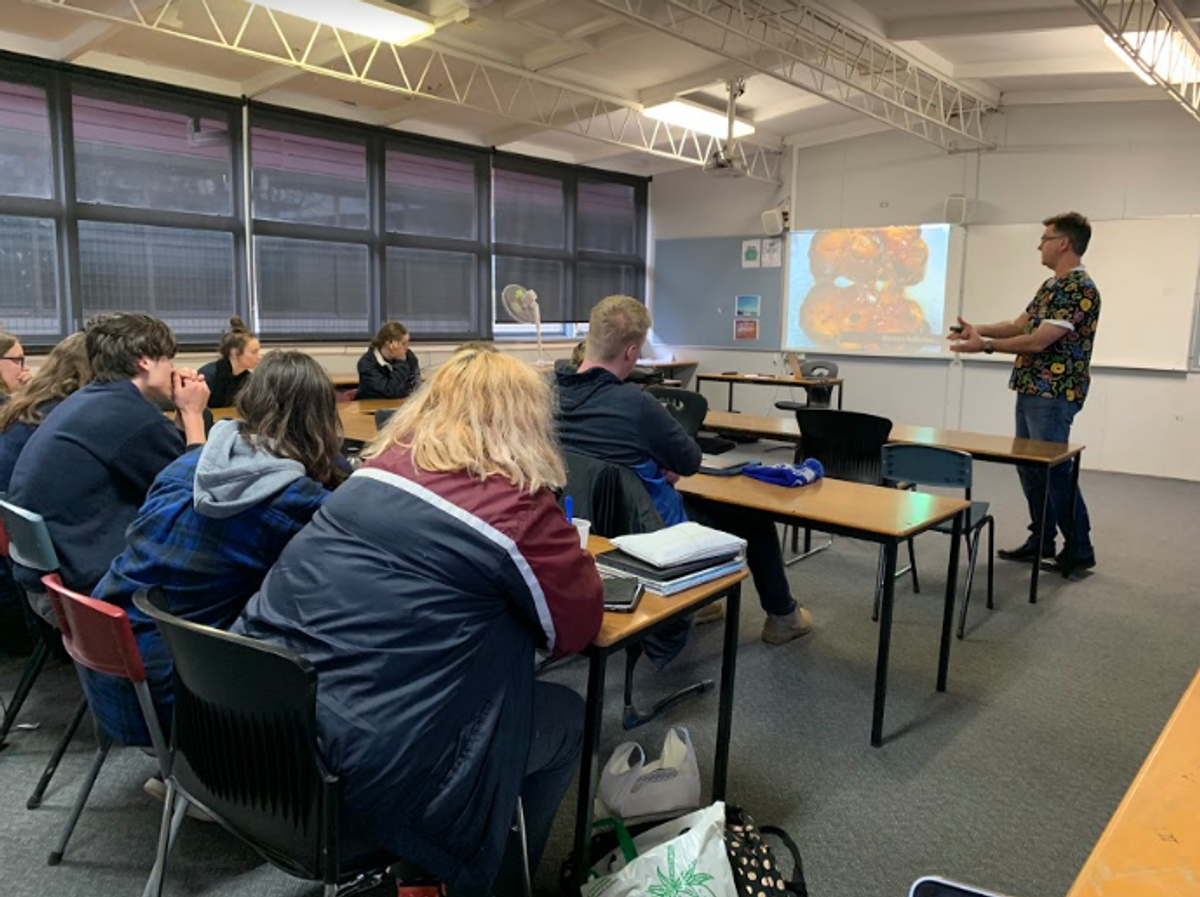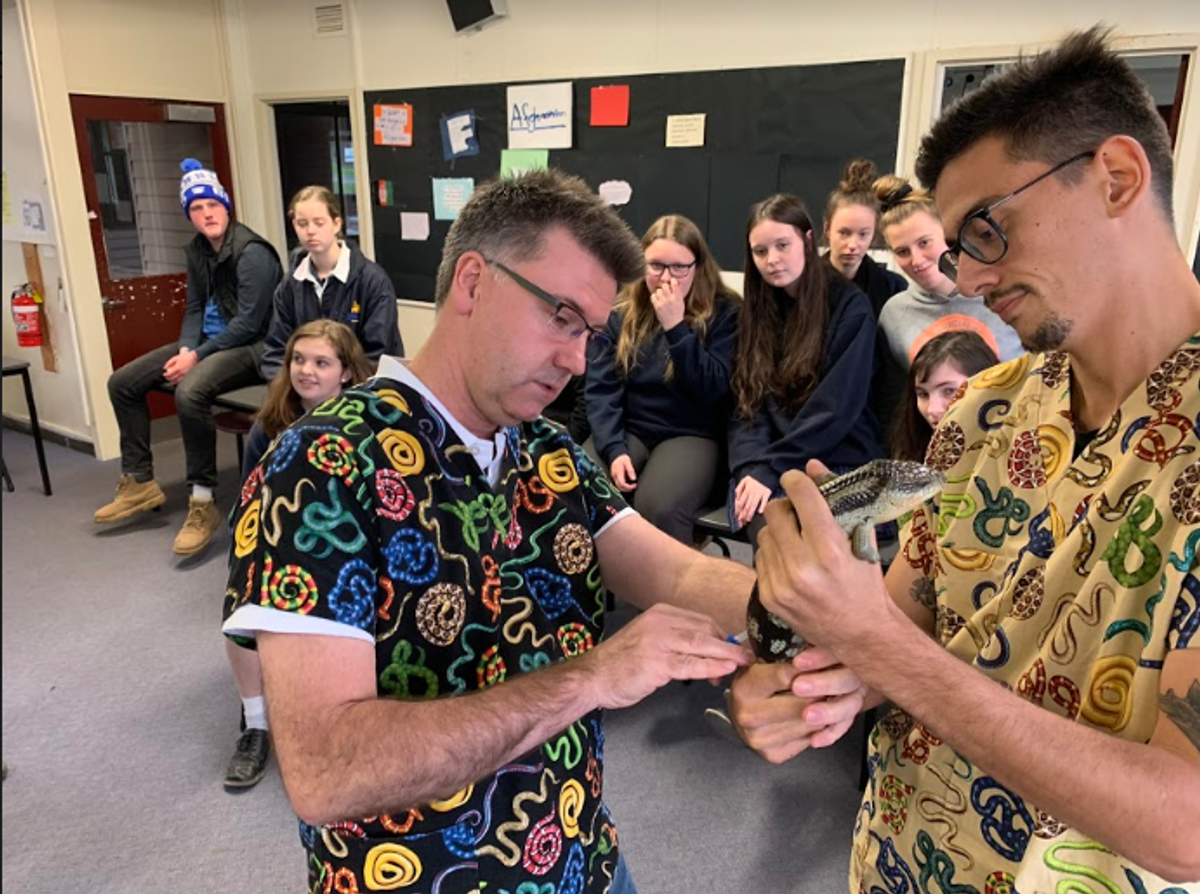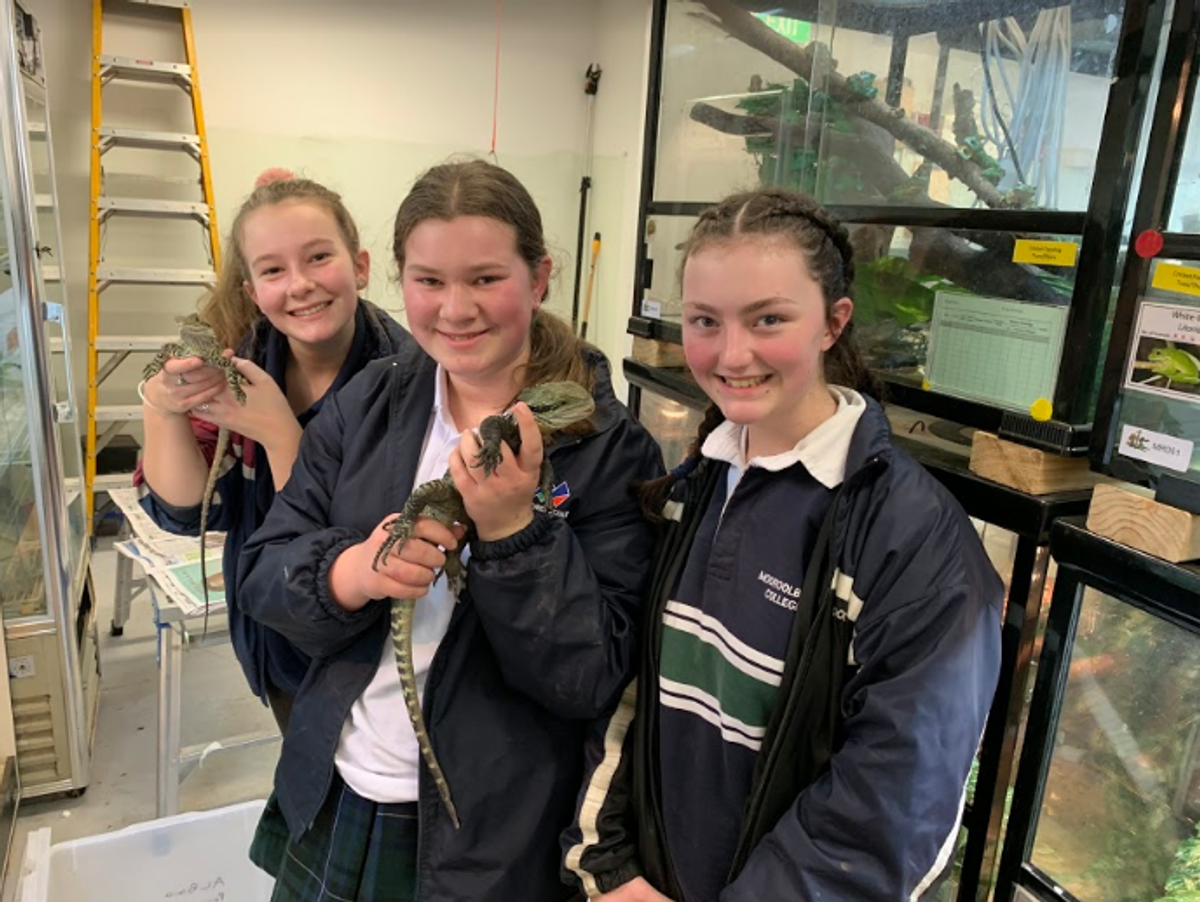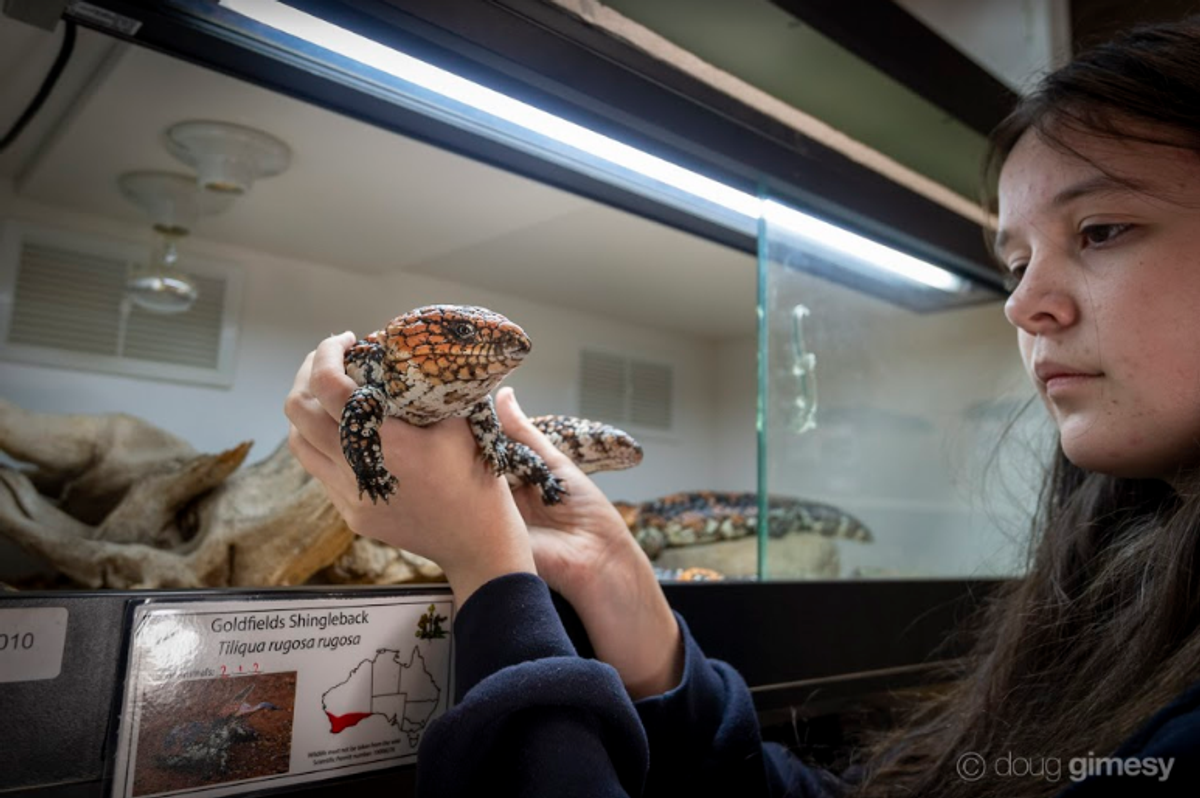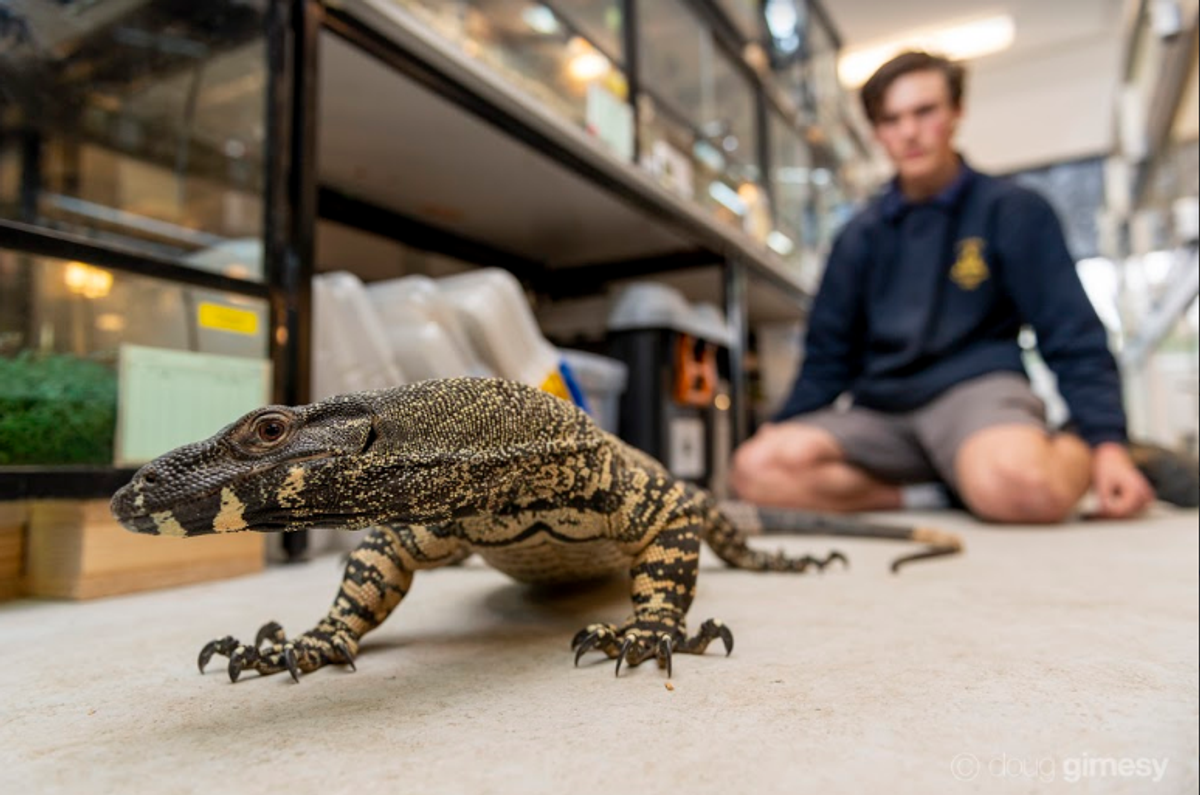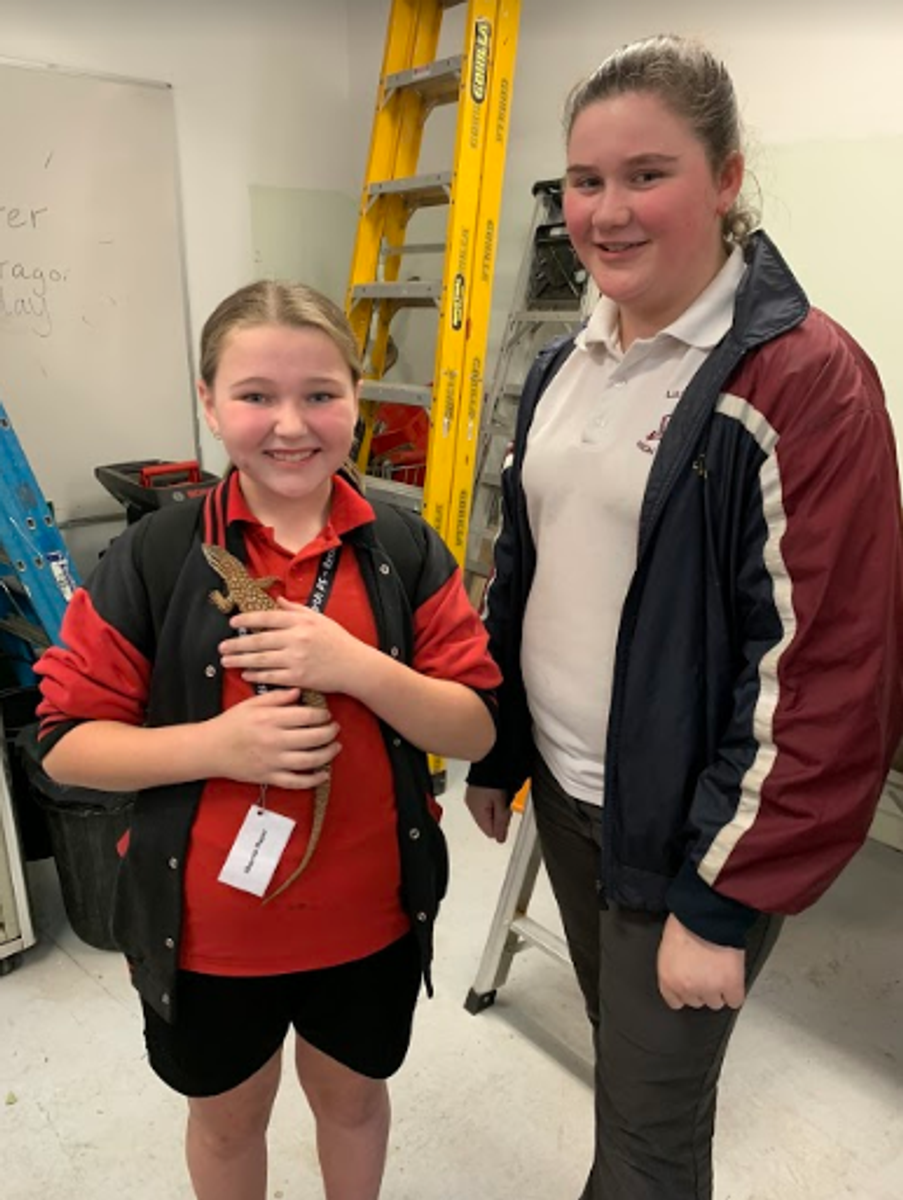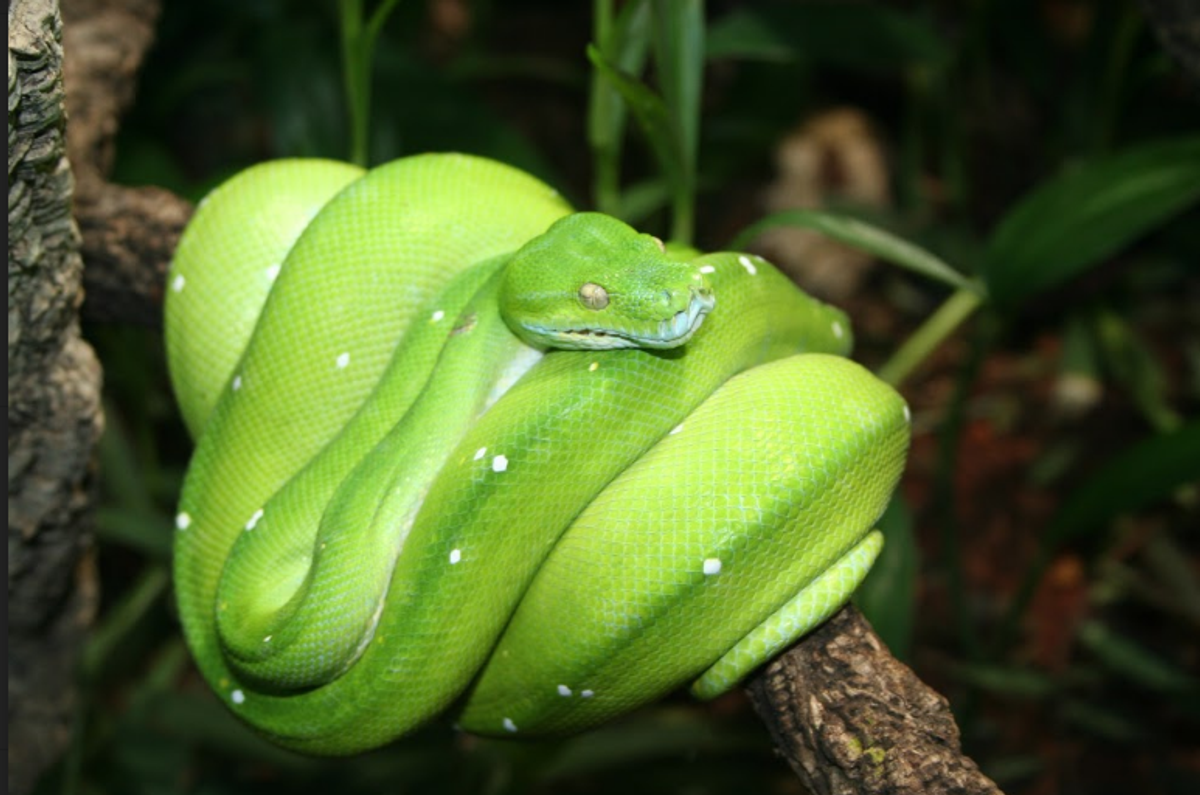REPTILE ROOM
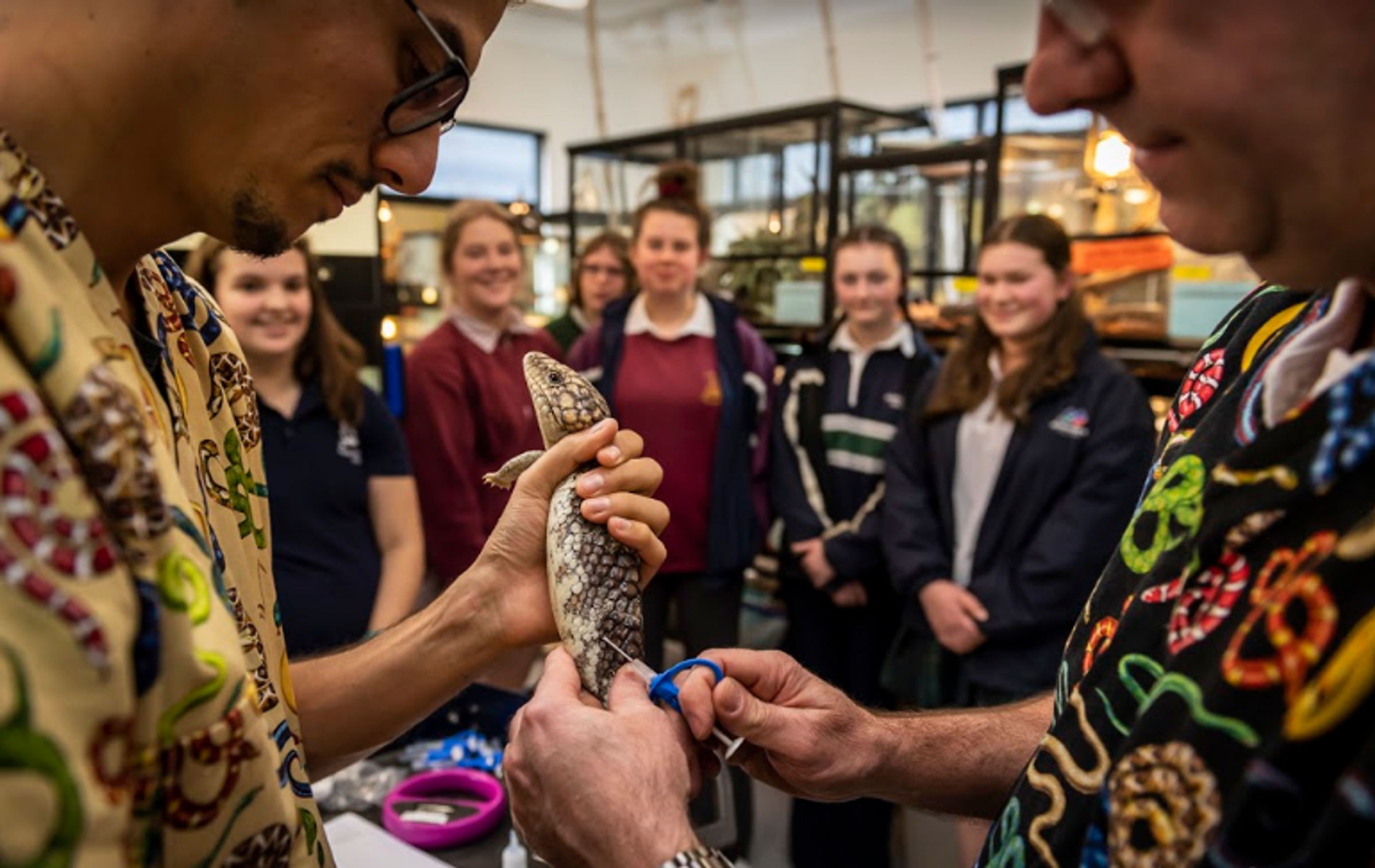
Visitors Galore!
Over the past couple of weeks we’ve had numerous primary schools visit us. The students
made the most of their short time in the Reptile Room. holding and pating as many animals as possible and even taking the opportunity to feed some frogs. Many of the students chose an animal that they want to be keeper of, when they come to the school in 2021.
As always, the current Zoo Keepers loved the opportunity to show off their animals, as well as their skills and knowledge and were fantastic with the primary school students.
The VET Animals Studies students and Zoo Keepers, were also lucky enough to have Shane Simpson, Australia’s best Reptile Vet, pay us a visit. Shane gave three presentations to the students, as well as involving them in a few small procedures on our animals including, microchipping animals and taking viral swabs, to test for viruses, as part of our quarantine procedures.
The NEW Reptile Room is continuing to be developed, with the large open enclosure area almost ready for the water dragons and turtles.
As we’re starting to move towards Spring, the students are starting to prepare for the breeding season and thinking about what needs to be organised, for possible babies in the future. The temperature in some of the enclosures are starting to be turned up a little and animals are beginning to be introduced for what we hope, will be a busy baby season later this year.
Primary School visitors
VET Animals Studies students and
Zoo Keepers
Marcus Whitby
Keeper Profile
Jaden Dooley
Team Leader - Room 44 Off Display
Age: 13 years
How long have you been a keeper in the Reptile House?
I’ve been a keeper for about a year and a half.
Which animals do you enjoy working with the most?
I enjoy working with the snakes and the Merten’s Water Monitor the most.
What has been one of your most memorable moments in the Reptile House?
One of my most memorable moments, was going to the kindergartens and showing our animals to the little kids and how excited they are to see all are cool animals.
What do you enjoy about being a keeper in the Reptile House?
I enjoy getting to work with all the different animals and having people around, who have the same interest as me, in loving the reptiles.
What are your aspirations for the future?
My aspiration for the future, is to become a vet and to take care of the animals, or to work in a sanctuary and take care of the animals.
Which animal is your favourite and why?
My favourite animal is 'Danger' the Bearded Dragon, who I’m keeper of. What I do to take care of him is, clean his cage, change his water and clean his rocks. Danger eats a vegetable mix and crickets throughout the week. He is the coolest to work with, because he is a calm animal and easy to work with when I need to take him out of his enclosure.
What is your leadership role in the Reptile House?
My leadership role is the 'Head of Off Display', where I take care of animals that aren’t in the main room. This may be because they are breeding, are sick, new to the collection, or are simply, rotated out of the display enclosures in the main room.
What do you enjoy about this role?
I enjoy not having as many people in my room. It is peaceful and most of the animals are easy to work with.
What do you find challenging about this role?
I find keeping my room organised challenging, because it is a small room with a lot of stuff in it and it can get messy very quickly.
Why did you choose to apply for this role?
I chose to apply for this role, to challenge me a bit more and so I can learn new things, when working in Off Display.
With the new Zoology building being built over the coming year, what are you looking forward to the most when we moving into that building?
Having more space and a more professional environment to work in and our animals can have bigger enclosures to stay in.
Creature Feature 6
Green Python - Morelia viridis
Total length 1.5m
There are about 20 different species of pythons in Australia and perhaps the most beautiful of these, is the Green Python (Morelia viridis).
While reasonably widespread through New Guinea and other islands, in Australia they are restricted to a very small distribution on Cape York Peninsula, in Far North Queensland.
Perhaps one of the most interesting aspects of this species, is the ontogenetic colour change from juvenile to adult. For about the first three years of their life, Green Pythons are in fact bright yellow or dark red. As they mature, their whole-body changes to light green with some white spots and markings.
They occur only in tropical rainforests and fed upon lizards, birds and mammals, which they overpower by constriction. Like all pythons they are non-venomous.
Mike Swan



